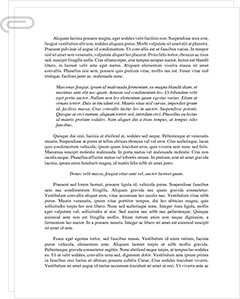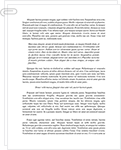 Study Document
Study Document
Climate Change Impacts Essay
Pages:2 (610 words)
Sources:1+
Document Type:Essay
Document:#97487118
Part 1: A Closer Look at the Evidence
1. The first graph on the NASA site shows the concentration of CO2 in the atmosphere, comparing across time. It shows that for all time, there were fluctuations in the level of CO2 in the atmosphere, but that the level always remained below 300 parts per million. The graph takes a sharp uptick in recent years, and by the time we get to the 20th century it is basically a straight upward line, to the present level around 400ppm. The 1950 level was only at around 320, so nearly a quarter of the carbon in the atmosphere has been added in about the last 70 years or so, and that is for all-time.
The UK website explains that the increase in carbon dioxide levels in the environment has occurred since the Industrial Revolution, which brought about many changes in technology, including the development of fossil fuel engines.
2. The NASA site outlines the falling different supporting data for climate change:
Global temperature increase of 1.1C since the late 19th century
Oceans warmed 0.302F sine 1969
Shrinking ice sheets, especially in Greenland and Antarctica
Glacial retreat
Decreased snow cover
Sea level rise
Declining Arctic sea ice
Increase in extreme weather events
Increase in ocean acidification
The Met Office cites
Higher temperatures
Changing rainfall
Changes in nature
Sea level rise
Retreating glaciers
Sea ice
And ice sheets
Many of these are the same: temperature rise, declining ice sheets, glacial retreat and sea level rise are on both lists. But there are also some differences between the lists, including snow cover, rainfall, changes in nature, extreme weather events and ocean acidification.
3. There are going to be many effects of climate change, and these effects are going to occur over a period of centuries. These include increased temperatures, which will lead to increased growing seasons, but will also lead to changes in precipitation patterns, more heat waves and droughts, more intense storms, sea level rise, and the Arctic will become ice free. There will be impacts that are different in different regions.
Part II. Economic Growth
We know that economic growth…
Sample Source(s) Used
References
Climate change: How do we know? (n.d.). Global Climate Change: NASA. Accessed on August 8, 2014, at http://climate.nasa.gov/evidence
The outlook: Averting the sixth extinction. (2013). The Economist, 408(8853), 15. Available in the Trident Online Library.
What is climate change? (2017). Met Office. Accessed on August 16, 2016, at http://www.metoffice.gov.uk/climate-guide/climate-change.
Related Documents
 Study Document
Study Document
Climate Change Impacts on Agriculture
Climate Change Impacts on Agriculture Weather and the related temperature, light and water determine to a large extent the human society's ability to feed themselves and the animals they care for. When the weather changes due to variations n climate or long-terms changes in climate there are very serious impacts on agricultural production and reduction of crop production and these force the farmers to take up new methods of agriculture so
 Study Document
Study Document
Impact of Climate Change on Wildlife
Climate Change: Impact on Wildlife Climate change can be defined as a change in climatic patterns resulting from increases in the levels of atmospheric greenhouse gases such as carbon dioxide. These gases form some kind of blanket that not only gets thicker, but also makes the planet warmer with increasing gas levels. This temperature increase alters the planet's climate, giving rise to unpredictable and extreme weather. As a result of climate
 Study Document
Study Document
Climate Change; Too Hot to Handle Climate
Climate change; Too hot to handle? Climate Change In respect to the world peace, today, there are various issues of concern for survival of humanity in the universe. There are growing interest into the subject of arms race, regional conflicts and continuous injustices among people and nations. However, among the challenges related to these issues, one surpasses the understanding of humanity on measures to adopt in combating it. This is the subject
 Study Document
Study Document
Climate Change, Divorced From the Political Rhetoric,
Climate change, divorced from the political rhetoric, is a concrete phenomenon affecting multiple systems. The economic and social ramifications of climate change are ancillary to its measurable physical effects. However, the measurable physical effects vary depending on geographic factors. Climate change has a direct effect on water at all levels of the hydrological cycle. According to the United States Environmental Protection Agency (2014), "we will continue to witness changes to
 Study Document
Study Document
Impact of Climate Change on Scuba Diving
SCUBA and the Environment: A Paradox
The relationship between SCUBA diving and environmental and marine health is a strange, tenuous, and paradoxical one. On the one hand, diving activities and the ancillary effects of diving-related tourism have threatened and in many cases, outright killed coral reef systems (McVeigh, 2018). Popular diving sites have in many cases been irreversibly damaged. For example, busy sites are known to have “more broken corals,
 Study Document
Study Document
Climate Change and Climate
Mother Earth Is Climate Change an Issue of Women's Rights? For the most of the world, climate change is one of the most pressing issues on the radar. It has become increasingly clear that anthropogenic activities are influencing the Earth's precious energy balance for quite some time; since industrialization primarily. While the evidence has been mounting and the science has become increasingly sophisticated, it has also become clear that the impacts of



